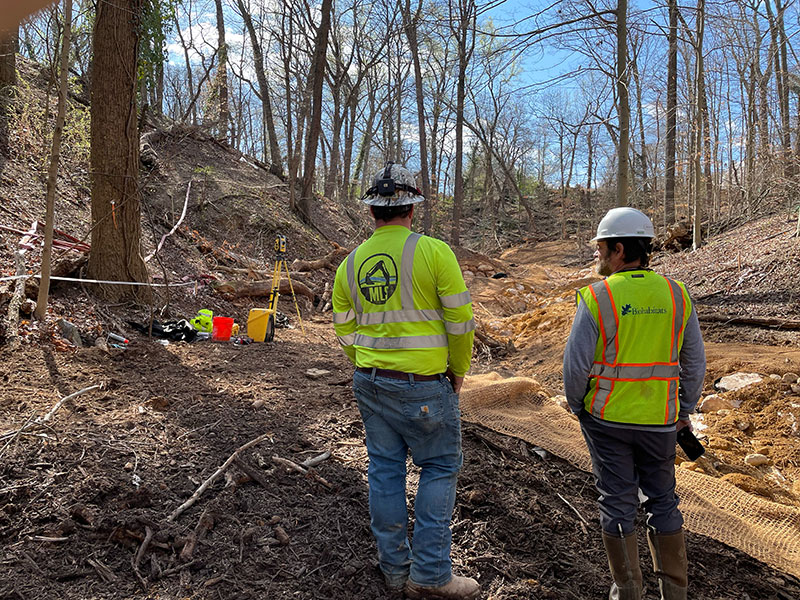Expert Q&A: The Contractors
Interview by Matt Koozer, Construction Leader, and Amy Nelson, Leaf Litter Editor

Donna An is the principal and owner of Actaeon, a construction firm that focuses on aquatic resource restoration in the Maryland/Virginia/Washington, DC region. Passionate about water resources restoration and environmental justice, Donna develops cohesive teams to successfully deliver shoreline, stream, wetland restoration and SWM pond retrofit and maintenance projects to wide range of federal, state, county governments as well as and NGOs and private clients. She pursues opportunities to implement programs and construct restoration projects in socially, environmentally and economically disadvantaged communities.
Steve Fabian is a project manager and lead estimator with Meadville Land Service, Inc. (MLS), an ecological restoration construction company with more than 25 years of specialized experience with construction and restoration of streams and wetlands. Steve has been with MLS for over 20 years, and in his 10 plus years as a project manager, he has constructed over 70 restoration projects, more than 20 of which have been design/build. Mike Thompson, who also works with MLS, is a restoration design coordinator. Mike spent the first two decades of his career on the assessment and design side of projects involving stream and wetland restoration, stormwater management retrofits, and low impact design, but since joining MLS four years ago, he has applied his expertise to getting projects in the ground.
Can you tell us about the nature-based solutions that your companies help create?
Donna: We do stream and shoreline restoration, as well as stormwater retrofit construction. Our specialty is regenerative stream restoration, but we have also done natural channel design and legacy sediment removal. We also have a maintenance division for stormwater and stream projects as well as our marine contractor’s license.
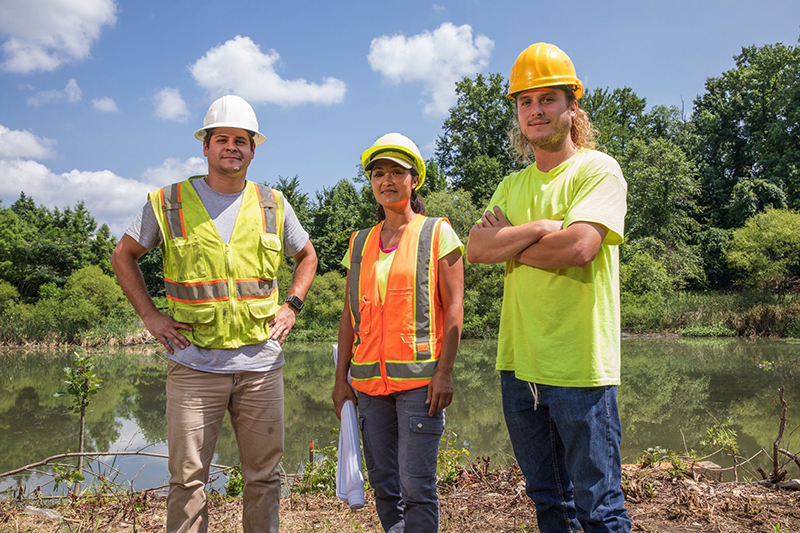
Steve: We do a lot of stream and wetland restoration, native seeding and planting, bioengineering, and stormwater work. We have done some shoreline work, and we are trying to get our marine contractor’s license so that we can do more. We are a team of about 50 people, and at any time, we might have five or six construction crews out on project sites. We work throughout the mid-Atlantic and in Ohio.
Generally speaking, what percentage of your work is done through the design-build project delivery model?
Steve: It can vary depending on the year, the project, and the location, but we are seeing a lot more of it. We do a fair amount of work in Ohio, where design-build seems to be becoming more prevalent, so in Ohio I’d say 80%-90% of our work is design-build. What’s nice about that is you feel like you’re more on a level playing field with competitors for those projects. With design-build restoration projects, there are established teams of designers and contractors going after that work. You feel like you have a fair chance. With design-bid-build, you may be competing against a general contractor or an earth mover that doesn’t do this type of work and that gets frustrating. This work may not seem as complex as building a bridge or road, but there are a lot of different means and methods that go into it that make it different—just dealing with the ground conditions and water management, for example.
Mike: In Maryland, only about 10% of our work is design-build, and in Pennsylvania, it is even less. Overall, I’d say 40-50% of our work is design-build; the rest is design-bid-build.
Donna: The percentage of our work that is design-build varies throughout the year, but it is somewhere between 10%-30%. That percentage does, however, include “full delivery” projects, where there is a general contractor (GC) who gets the design-build team together. Some people may see full delivery as synonymous with design-build, but I do not. With full delivery, I do not think there is as much team cohesiveness. The GC chooses who the designer and contractor will be, and with the GC managing communication and coordination, the process can take longer, some of the details can get lost, and there can be more inefficiencies than D/B.
Mike: I agree. You may have a designer and construction contractor that work very well together, but throw in the GC, who is handling the funding and permitting, and that adds another level. The GC may change some of the designer’s specs, for example, and say, “We don’t want to use that material. We want to use this material instead.”
Design-build teams can be either contractor-led or designer-led. Have you worked on both types of teams? Do you have a preference? What makes a good design-build team?
Donna: I have done both. If the design firm and construction firm are both truly committed to each other and to finding nature-based solutions, it works well regardless of who leads. When I lead a design-build team, I make it clear that every member of the team needs to set each other up for success. I don’t think it matters who leads if both the design firm and the construction firm have that mindset and the commitment to communicate with and involve each other at key junctures.
Mike: We once went after a project that was PennBid [an electronic bid management platform]. We put a bid in, along with about 50 other contractors, both qualified and unqualified, and it was a low bid situation. The low bidder was so low that I think our material cost was the same amount as their entire bid. But something happened, and the project never got built. So, you end up with something that sits on a shelf, and township commissioners who are so upset they may never consider restoration again. Sometimes the design-bid-build project delivery method can have negative consequences other than just the increased cost aspect.
Donna: I think that’s why we’re currently in a situation where some citizens are against stream restoration. Over the past decades we have had some permit reviewers, designers and contractors who really weren’t focused on nature-based solutions, and they took the approach of clear-cutting trees to restore streams.
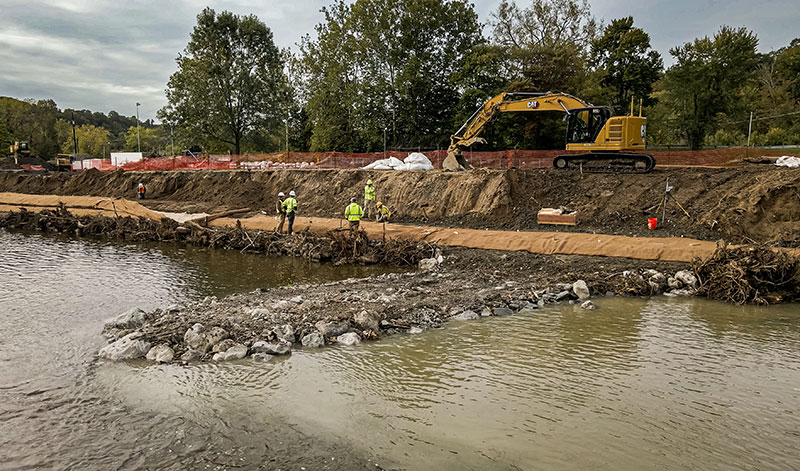
Mike: As the contractor, we are where the rubber hits the road, and we’re usually the last one on site. If things go badly in the field, it reflects more on the contractor than any of the other parties involved. We are perceived as the bad guy out there, even though the design may have called for an excessive amount of tree clearing or a rock-lined channel. For me, the key to a successful design-build relationship is understanding that everybody brings something to the project. There is a mutual respect for the skills and knowledge that each partner brings. In a good design-build team, when you have input from the contractor up front and everybody is working together, you can look for ways to save trees and offer up suggestions such as, “Hey, if we shift the stream slightly this way, we can save this tree,” or “we can remove this grove of tulip poplars and save the grove of sycamores instead.” There’s a lot of that give and take that doesn’t happen in design-bid-build.
We’re not just earth movers.
Donna: Trust is really key. [In a good design-build team] the designer trusts us to provide input during the design phase. We go to the site with the design team to help them see, from a contractor’s point of view, what is feasible. We’re not just earth movers. Many of us are knowledgeable about the ecology of the site. Because we work in the field and make a lot of observations, we also know what will and will not work in a certain areas or in certain conditions. Without that level of trust, you can get into situations when everyone just starts pointing fingers instead of saying, “Okay, how can we solve this?”
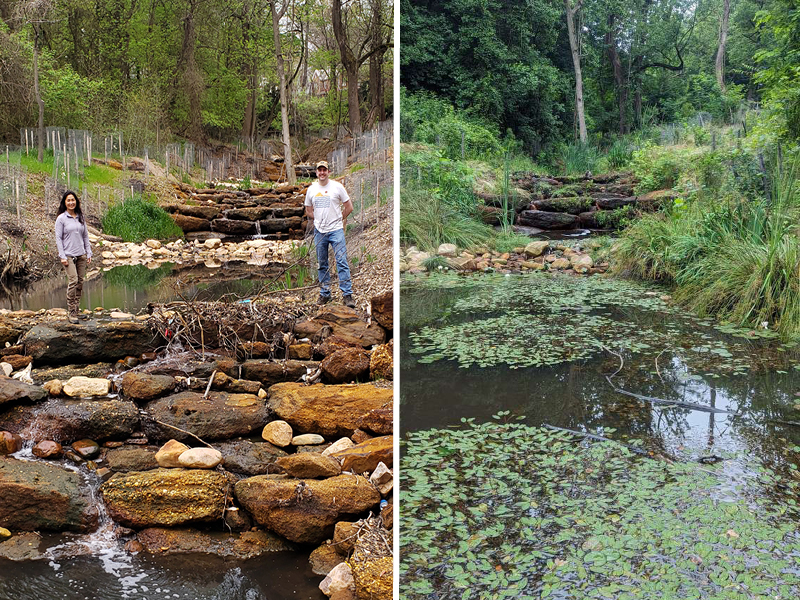
Let’s talk more about risk. How is risk different in a design-build vs. a design-bid-build project?
Mike: Having worked as a designer and contractor, I have seen it from both ends. Going into a design, when you’re doing your field assessment, you’re noting things that could be problematic. You may have a lot of utilities or sewer line crossings, or you may have bedrock. In a design-bid-build, you know these things are there, but you still make your design. You don’t understand, for example, the full extent of that bedrock. You don’t know which direction it’s going or how deep it is. During construction, you then have to stop, excavate, find out the extent of the bedrock, and wait for a redesign. You could lose a week. But with a design-build, there would be a lot more flexibility in those designs because you could put some caveats in them, “There is bedrock here, we may need to shift this.” Having that trust and partnership, the contractor can call the engineer and say, “Hey, we’re going to be at station 10+28 where the bedrock is. Can you all come out? Let’s make adjustments.” I once did a design-bid-build project where it would take an entire day to get an answer to one simple question.
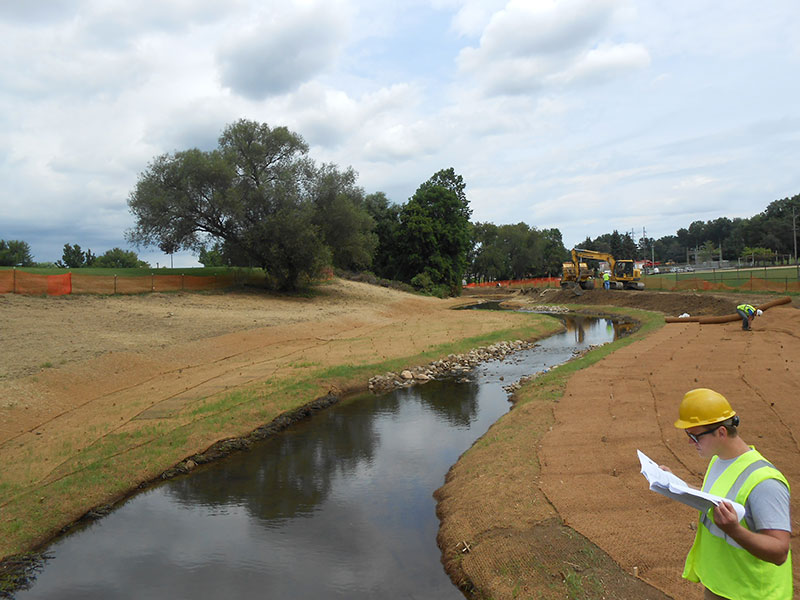
Donna: Oh, you’re lucky you got an answer in a day.
Mike: Right. Sometimes it can take a week.
Donna: For one of our design-build projects, we did a whole risk analysis and we presented it to the client as part of our proposal. We identified things that we thought could happen, but we couldn’t ground truth because it was so early on. The client was then able to add a little bit of contingency, and we had that trust and coordination right from the start. On that project, I could just call the engineer and say, “I’m running into this, and here’s what I think we should do” and he’d say, “Go for it.” He didn’t even have to come out. We would send each other photos and videos and talk through the challenges. That coordination saved us money and time. It also gave us room for situations when we did need him to come out to the site. With design-build, at the proposal stage, you can let the client know that there are things that are out of all our hands. If they are a wise client, they will also put some funding aside based on the risk assessment. Then, when you run into situations you couldn’t have fathomed or issues that are much greater than anticipated, you easily come together as a team. Because all three of you— designer, contractor, and client—have gone through the design-build process, perhaps for two or three years, you have that level of trust and communication. As the contractor, you do not have to feel like, “Oh, shoot, how do we bring this up and resolve it?” You’re already prepared to come up with a solution together.
Let’s talk about the value of the contractor’s perspective during the design phase of a design-build project. Can you share any anecdotes about times that your input really saved the day?
Steve: Many engineers doing this work have designed these types of projects before, but some have not. They may be looking at qualitative data like hydrology, hydraulics, and what needs be done from an engineering standpoint for stability, but they may not be factoring in constructability. One of the most important aspects of design-build is the ability to have the contractor give their perspective on feasibility, constructability, means, and methods. We can look at the design and say, “I don’t know if this structure will do what you want it to do from a hydraulics and engineering standpoint, but I can tell you it’s going to be a pain to build,” or ” it’s going to take four times as long to build,” or “it’s going to be five times more expensive than alternative A, B or C.”
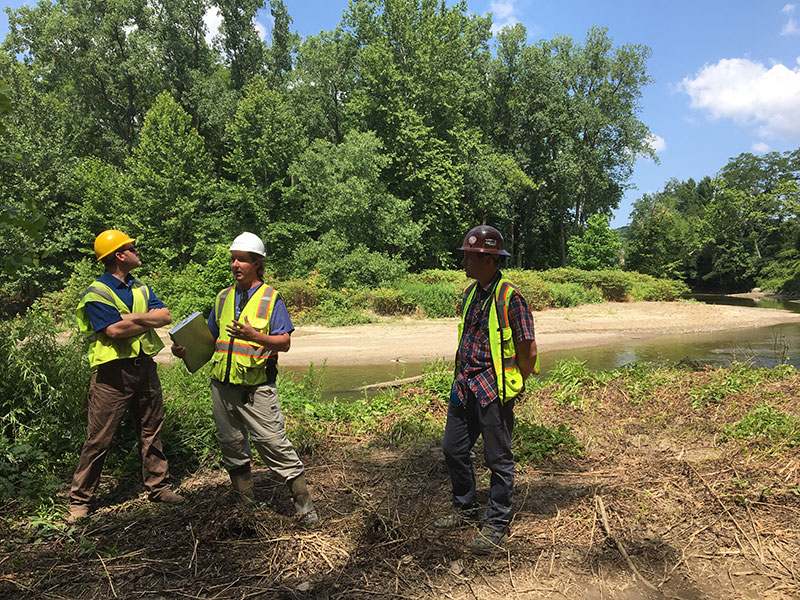
The contractor also brings important knowledge about access and staging. You are not building a big hospital where you’re wiping out the entire site. With nature-based solutions, you’re trying to go in surgically implement the improvements to save resources and limit disturbance and further impact to the site.
A contractor’s perspective on access and staging can also save you time and money. To be able to look at a design and say, “It is going to be very difficult to access this area,” or “it’s going to take a certain level of extra work,” is very valuable. You might have just as much cost or effort getting into and staging your work areas as you do to do the work. It is always beneficial to have the contractor involved from the beginning; not to completely sway a design, but to give that perspective. That’s one of the most valuable aspects of design-build: we [the contractor] can look at something and help. Mike and I often bounce ideas off each other as we’re working with the designer. Being able to talk about things like staging and access at the site analysis stage, that 30% design, is critical.
In a traditional design-bid-build project, even if an engineer has a great relationship with a contractor and wants to reach out to them to get an opinion on something, they may not have the ability or the resources to do so. Then you get to the point where the project has been designed and bid, and you have a bunch of contractors come out and say, “What are you thinking? You can’t do this. You can’t access it this way. You can’t build this. This is going to cost more than you think.”
Access, staging, stockpile, and erosion and sediment control are often overlooked in design-bid-build projects.
Mike: Access, staging, stockpile, and erosion and sediment control are often overlooked in design-bid-build projects. I once looked at a set of plans and there was no staging or stockpile; there was just an access road. I have also seen people put in a 10-foot-wide access road without understanding that you cannot turn equipment around in 10 feet. Or they’ll show a 10-foot-wide access road, but they’ll want timber mats that are 14 feet wide. There are all kinds of little things that people don’t think about. I have worked on projects where access costs three times as much as the repair.
Donna: We are also able to preserve and protect resources much better if the contractor is involved in that design phase, walking the site with the engineer. We can say, “You know what? We may be able to save this tree, but we’re not sure, so please get it permitted for removal, but we’ll do our best not to remove it.” And then in that permit, in your plans, and in the sequence of construction, you can work in some flexibility to allow a little bit more control and adaptive management during construction.
Steve: Certain things cannot be avoided from a permit standpoint. There could be standards and requirements that must be fulfilled. But there could also be times where the designer assumes we need X, Y, and Z, and we can say, “If X, Y, and Z are not required from a permit standpoint, or from some other project stakeholders, we don’t need to do X, Y, and Z, which will save time and money.” There could also be the flip side where you may need to say, “In this area we are going to do X, Y, and Z. The designer may not think these items are necessary, but we can tell based on site conditions and previous experience that they are.” Then we can factor those items into our cost estimating at an earlier stage in the process to help make the construction budget as accurate as possible.
Does the exchange of information and knowledge in a design-build project differ from that of a traditional design-bid-build project?
Steve: The traditional design-bid-build approach is more bureaucratic. The designer and contractor are working on the same project, but they are both tied differently to the owner. It’s like, “Even though we’re working on the same project, I don’t really answer to you, and you don’t answer to me. We both answer to this other party.” Everybody is a little bit different in the way they provide and share information. You have to follow all these avenues and chains of command differently. It is harder and takes longer to make decisions and changes.
With design-build, the lines of communication are a lot more fluid and open, and the process of making changes and decisions is a lot faster. I can go right to the engineer and say, “This is what’s happening. We need to make an adjustment.” And the engineer is more accepting of that change and a lot quicker to collaborate on a solution. You don’t have to go to the owner and say, “We need to make this change,” because you’re already tasked with providing them this product, and it’s up to you as the team to provide that deliverable.
There is also a personal factor. I have a sense of ownership in everything I do, but I think I am more vested in design-build projects. I’ve been involved since day one and I have a greater understanding of the project. I’ve had my fingers in it. I’ve influenced it. When it goes to construction it is more gratifying because I see what we have been working on for the last six to eight months or more coming to life. If I bid on [construction of a design-bid-build project] today, it could be awarded within a few weeks and we could go construction shortly thereafter. Sometimes a design-bid-build project can move much quicker for a contractor, but I don’t’ think the level of input and ownership is the same.
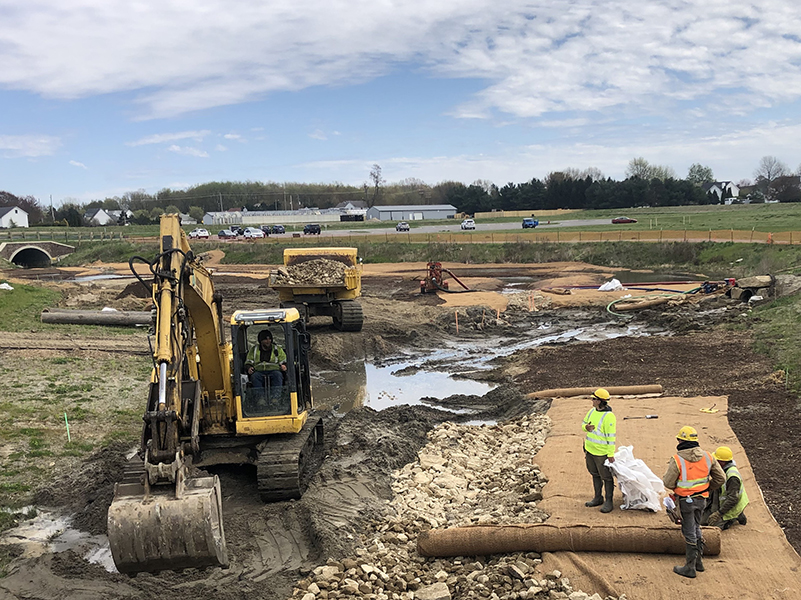
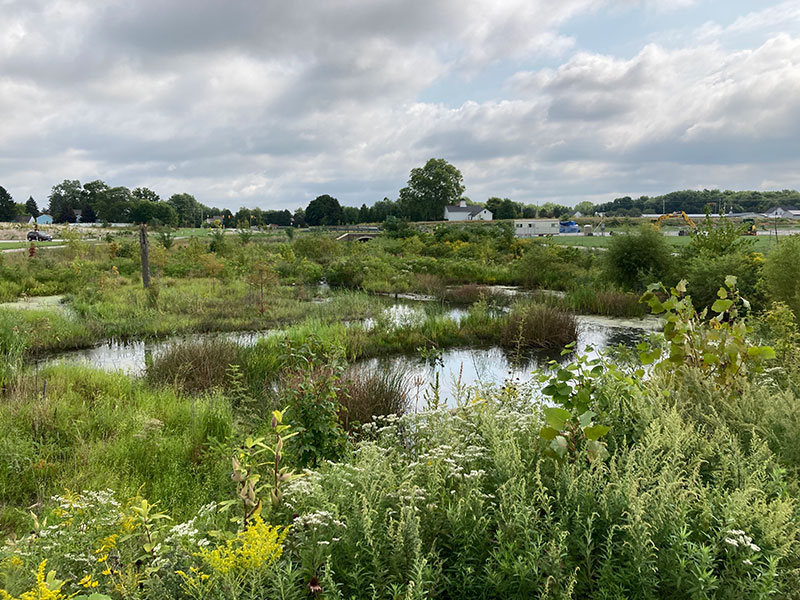
Donna: There is more shared accountability between the designer and the contractor with design-build because you have both been involved from the beginning and there is, again, that level of trust. The two of you came together as a team for a reason—because you respected each other’s capabilities and together you build trust with the client.
Steve: A lot of our design-build work is designer-led, and the designer is fully vested the entire time. Once the contractor comes in, the designer could have an attitude of, “Okay. Now we’re handing it over” but that is not the case. The designer is tied in the whole time. So is the contractor. Even though I may not really need to be involved until the 30% stage, I am involved from day one. I’m in the progress meetings and on weekly calls, and I’m giving that input the whole way. If I don’t, something might get overlooked.
You mentioned how onerous it can be to try to make changes to the design with design-bid-build projects. I imagine you may come in in the ninth inning with an awesome idea and the engineer might resist it because…well, nobody likes hearing that their baby is ugly. Whereas in design-build, it’s kind of our baby. Is that right?
Steve: Yes, with design-bid-build, there could be that resistance. Even if you’ve worked together in the past, and the engineer understands your capabilities and history, it might be harder to push a change through and get everybody to buy in. But when you’re together as a design-build team, there is much more willingness to listen and make changes. In a design-build situation, I also think that team members from the engineering side are more willing to spend time explaining or sharing ideas with the crew, rather than saying “I’m not going to explain why I did this or how we’re doing it. You don’t need to know that. You are the contractor; just build it.”
Based on your experience and observations do you see a difference in design-bid-build versus design-build when it comes to client satisfaction?
Mike: I look at it as, “From whom would we get a good reference?” Generally, it would be the design-build clients that I think would provide a better reference. They’re the ones who see how the relationship improved the process and benefitted the project as a whole. Because when you have that disjointed relationship in the design-bid-build between the engineer and the contractor, it doesn’t work as well.
Steve: A design-bid-build project could involve only six to eight weeks’ worth of construction, so I might not really establish a relationship with the owner, and I may not really know the designer. It could be a new area that I’m working in, and somebody I don’t know. You don’t really have a lot of time there. With design-build—even if it’s a new client—I might only have two months’ worth of construction work, but I have now worked with that person for a year. I’ve established a relationship on a working level, and maybe even a personal level. The client understands and trusts you a bit more because you’ve been having this dialogue and giving your input and bringing value all along. They can look at you and say, “This person knows what they’re talking about. They’re experienced, they have understanding.” Where if I just show up on a design-bid-build job and say, “This isn’t right. This isn’t going to work” they don’t buy into that because they don’t know me, and they don’t’ know if I know what I’m talking about.
Thinking back to what Mike said about a recommendation, you could construct a great project and the client could say, “They did a good job.” But if it’s a great design-build project and you’ve been with that client for a year, they can also attest to your overall approach, philosophy, attitude, and commitment.
Can you share one of your most positive experiences with a design-build project?
Donna: All of my design-build projects have really been positive for all the reasons that we’ve discussed. We have talked a lot about trust, and from that emerges a very cohesive, seamless process—even if that process occurs over three, four, or five years. We have not yet mentioned the other stakeholders outside of your client and your design-build team. When you have your design-build team throughout a multi-year process, the other stakeholders, whether they be the community, permit reviewers, or others, see you as a team.
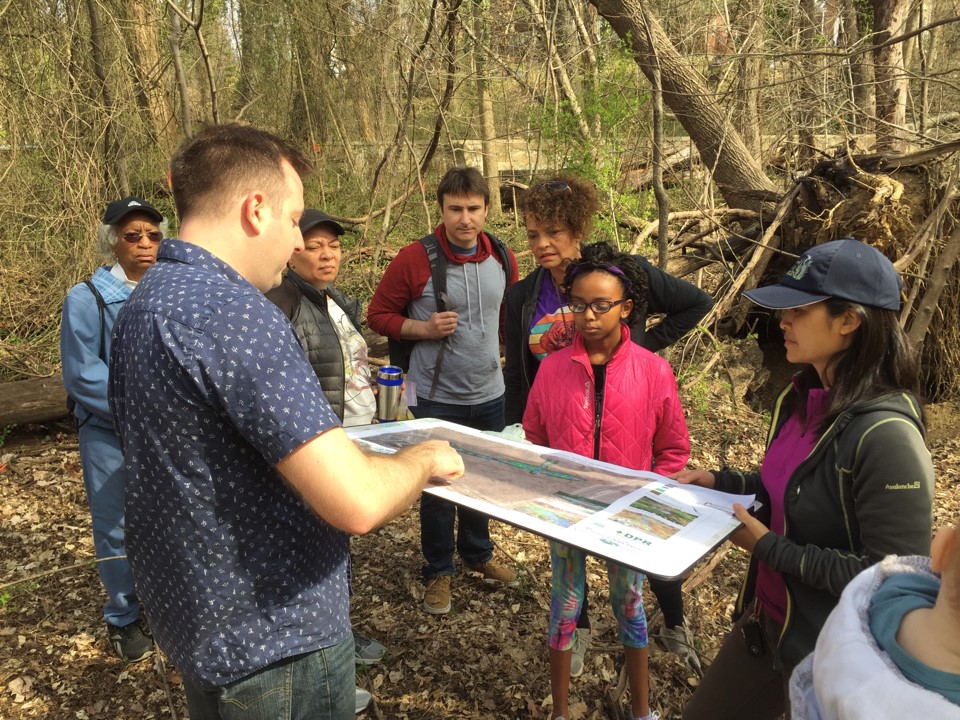
As a design-build contractor, when you show up three, four, or five years after a project launches, you are not seen by stakeholders as some random person they don’t know. Most of the stakeholders at least know your firm by name and likely know you from community meetings. When you show up with the big heavy equipment and start making a lot of dust and noise, they are less inclined to start criticizing and picking out things they think are wrong. Rather, they are so excited that you are on site and putting something in the ground. I think that also facilitates that construction phase.
There’s that trust and familiarity theme again.
Donna: Yes, even beyond that core team of your client and the design-build team. I’ve really enjoyed that process a lot in my design-build and being part of that client satisfaction; client including the other stakeholders outside the funders.
Mike: I think that more clients need to understand that they’ll have more of a benefit from design-build. It’s not just the reduced cost and project timeline, but the knowledge that the contractor and engineer trust each other, and that the client and their constituents can trust them too.
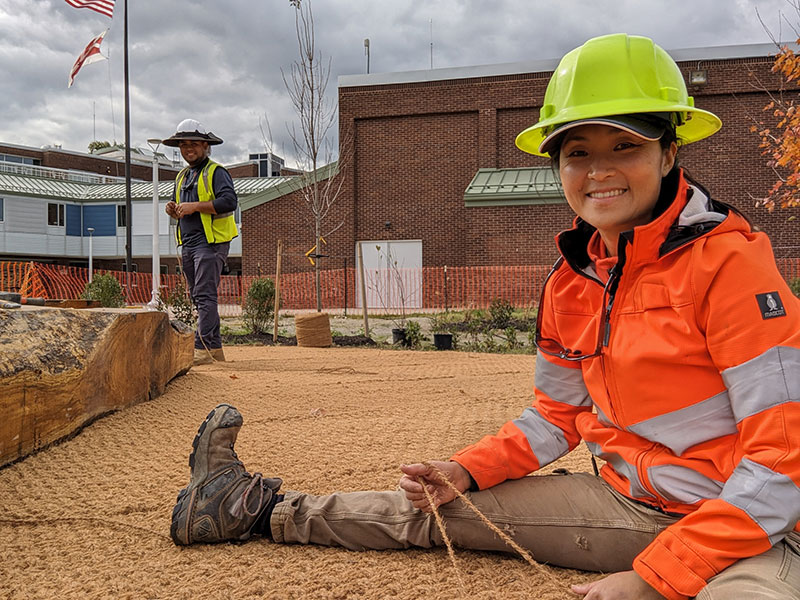
Is there a time when design-build is not appropriate?
Donna: If the client wants nature-based solutions, and if you can get the right team, design-build is really the way to go. If it’s not, then it can be done either way, but it can fail or succeed. It all really depends on how the RFP is put together. Is it a low bid? Are there qualifications and more of a qualitative technical proposal? Even with design-build, if it’s just a low bid, you’re not guaranteeing success. You are more likely to get firms that have less or no experience in designing and constructing streams . The responsibility really falls on the funder and/or the project owner, to think about what they want and how they want to go about getting it. There are some municipalities in my region who really don’t care. They just want to check off the box for their MS4 permit requirements and the budget that they have, and that is their priority. In that case, design-build is not as crucial, but it will still offer more efficiencies if you have a qualified team.
Steve: I don’t think there’s any instance in our line of work where design-build would not work. It’s just a matter of the owner’s funding, time constraints, or available contracting options. Design-build is even more beneficial in this type of work because there are so many changing variables. You could design something today and by the time it goes through permitting or funding it could be several years until it goes out to bid, and by then it’s a completely different site. A two-foot ditch four years ago, for example, may have since eroded into an eight-foot ditch. Whereas if it’s a design-build, you’re coming in, you’re going through that process and then it’s going to get built right afterwards. If anything changes during that process, you can catch it and deal with it as you’re moving forward.
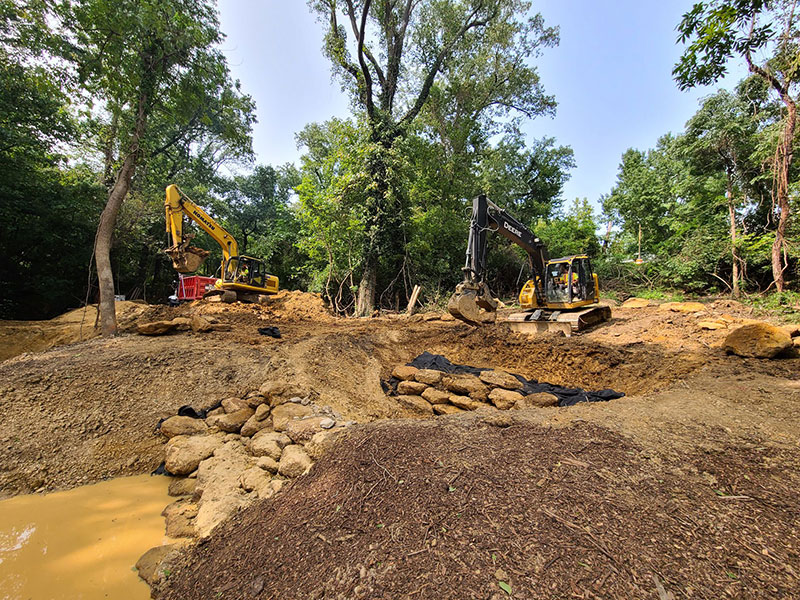
Donna: I also think you can apply the design-build approach to any work involving nature-based solutions and resource restoration. It allows for adaptive management throughout the entire process, which is something we should all be doing, regardless of what industry we are in. It is kind of the foundation of project management: you plan, execute, monitor, QA/QC, and then adapt. You go through that cycle over and over. With design-build, we have that back and forth throughout the entire process. Whereas design-bid-build is more linear and sequential.
Any last words you’d like to share with Leaf Litter readers?
Donna: Including maintenance in design-build contract structures would really elevate design-build to another level of success and client satisfaction. If you make it “design-build-maintain,” your team is going to be mindful during the design and build phase to set the post construction period up for success. Steve mentioned earlier that there is a need to be surgical in natural resource restoration, and in a way, it is a lot like surgery. If you do surgery on a patient, there is a post-op recovery period where you still see the patient and do follow-up. Even after wounds have healed, there are still things you need to do to prevent future problems. With design-build projects involving nature-based solutions, the contractor and the engineer know the site so well. If you bring a third party to do maintenance, they may not even know what plants are native and nonnative, or they may tromp all over slopes that you worked so hard to stabilize. I’d like to see the accountability associated with design-build extend into maintenance, and not just the one-year warranty period. There should be a three or five-year monitoring and maintenance period with proper funding to ensure timely work by properly trained crew.
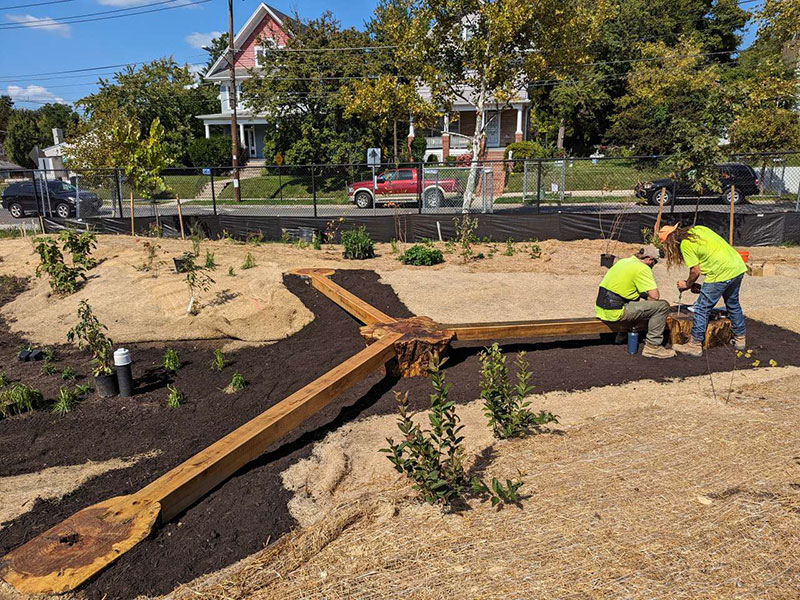
Any other final thoughts to share?
Steve: We have worked with a couple of different teams over the years doing design-build work [to create nature-based solutions]. I’ve made good friendships with people that I’ve done design-build projects with because I have spent so much time working with them. We have really gotten to know each other on not just a professional level, but a personal level as well. You not only get to know them and their families. This may sound corny, but that adds a whole layer to the trust and familiarity aspect and makes the project a more intimate and rewarding experience.
We don’t think that’s corny at all.
